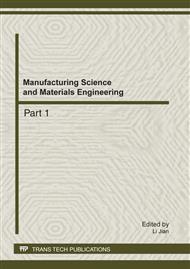p.709
p.713
p.719
p.724
p.731
p.738
p.745
p.751
p.757
Study of the Fouling Characteristics of Arc Pipe Based on Principal Component Analysis and Partial Least Squares
Abstract:
An experimental platform of arc pipe was built to measure the corresponding parameters of fouling and the equation of fouling characteristics was built based on principal component analysis and partial least squares, in which there are several input variables such as input and output temperature, wall temperature, flow rate and so on, and there is only one output variables—fouling resistance. In order to compare with the five-input-variables equation, the six-input-variables equation was also built. The prediction results show the model built in this paper is reasonable and feasible.
Info:
Periodical:
Pages:
731-737
Citation:
Online since:
January 2012
Authors:
Keywords:
Price:
Сopyright:
© 2012 Trans Tech Publications Ltd. All Rights Reserved
Share:
Citation:


